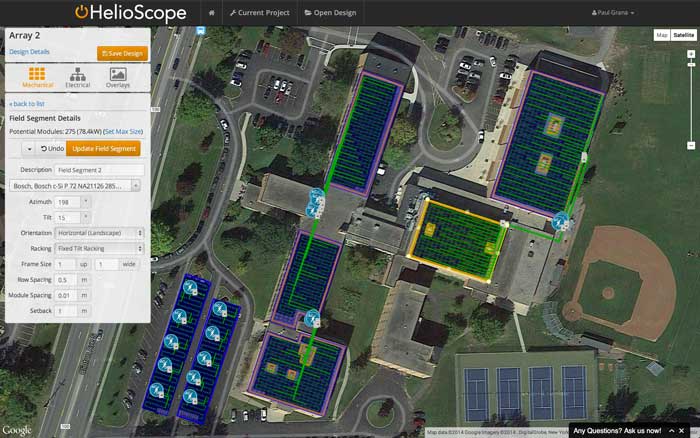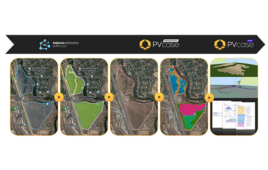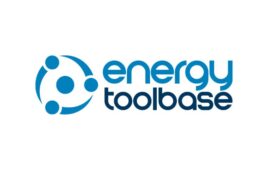
Effective solar sales professionals are always looking for ways to gain an edge. Software products have played a critical role in improving sales teams’ effectiveness.
Effective solar sales professionals are always looking for ways to gain an edge. They need to get access to more potential deals, and improve their close rates in those deals – all while serving their customers’ unique needs effectively. Software products have played a critical role in improving sales teams’ effectiveness.
The first generation of software programs, led by Clean Power Finance and others, offered automatic proposal templates, which were useful for improving the standardization across projects. Now, as the industry evolves further, a second generation of software is coming to market, with advanced functionality that helps business developers improve their effectiveness. This second generation includes:
- Switch by Genability: offering a proposal product that includes a verification of the customer’s savings from a solar array
- Simuwatt by Concept3D: offering an iPad-based program that generates a 3D render of a building with solar on the rooftop
- GreenLancer, offering a cloud-based platform for connecting project developers with freelance engineers
- HelioScope by Folsom Labs: offering a cloud-based design and modeling application that is fast and efficient to use
These programs help the sales team effectiveness in a number of ways:
- Improve the team’s throughput velocity
- Increase customer engagement
- Enable value-based selling
- Encourage real-time collaboration
As a result, sales teams are able to close more deals, faster than ever before.
Increased Throughput Velocity
A sales professionals’ throughput is the most important driver of their success. Leading developers are consistently able to improve the throughput of their sales teams by 10-50% annually.
A key constraint is that a proposal for a commercial property must include a system size and module count, and an energy yield / revenue estimate. Traditionally, these two steps (system size and yield) require two different programs (CAD and PVsyst), run by a specialized engineering team. So a typical sales cycle would involve a salesperson calling in a location to his/her engineering team, and then waiting days or weeks to get back a layout and yield estimate. This not only leads to a long turnaround time, but is also prone to significant delays. Often the engineers required for sales engineering would be pulled onto live projects being built, bringing sales to a standstill.
HelioScope by Folsom Labs address this bottleneck in the sales process. Users lay out a system using the Google Earth-based application – and the software generates a nameplate power and bill of materials, along with an energy yield estimate. By combining this into a single program, the time required to generate a proposal is dramatically reduced. Additionally, many sales professionals can use HelioScope directly, cutting out an entire step in the process. Fewer steps mean faster turnaround, and less room for miscommunication or error.
Customer engagement
New software tools can also help the engagement with customers in the middle of a direct sale. There are a number of ways to enhance this:
- Independent verification. When presenting a proposal to a customer, developers want to provide some assurances that the savings projections can be trusted. This is why Genability has recently launched a product called “Switch”, which includes a savings projection that is verified by Genability. This gives the customer greater confidence in the economic benefits of the solar array.
- Customer feedback. The customer may want input on the location of solar modules, inverter placement, and even equipment choice. HelioScope has the ability to modify a design on the fly, so a sales professional can immediately show the building owner what their changes will mean for the system’s cost and revenue. And most importantly, this eliminates an entire modification cycle, getting to a signed contract faster.
- Mobile devices. Many of these second-generation tools are completely mobile- or tablet-ready, making them perfect for use right in the field. Applications such as Simuwatt and HelioScope can come right into the customer meeting, dynamically showing different design approaches and financial scenarios.
Selling value
While some customers just want to know the bottom line (“how much will it cost, and what will I get”), others are more interested in the different options available. They are interested in the technologies and deign options available to make sure they are getting the best performance out of their solar system.
With these customers, Switch by Genability can help the salesperson show the customer how the solar array can help offset their specific production, in some cases even showing how the customer could change their tariff scheme based on the solar array. Additionally, HelioScope enables the developers to quickly run a number of different scenarios, to make sure they are proposing the most cost-effective system. This satisfies the customer’s desire for more information, while also making the developer look like they are going the extra mile.
Team Collaboration
Sales are often cyclical, and when it rains, it pours. So sales professionals often find themselves in a crunch, with too many proposals to work on – while some of their other colleagues may have extra time on their hands.
New collaboration tools can help relieve that tension by making it easier to share work across people. HelioScope has the ability to share entire projects by simply sharing a link. This gives the new user complete detail about the project, including the location, and any existing designs that have been completed. As a result, it is easy for someone else at the developer to quickly pick up the slack on the project, and help turn around a proposal or revise a design. And in the case where there aren’t extra resources, GreenLancer offers a cloud-based platform that connects developers with freelance engineers for project-specific proposals or designs.
Conclusion
While the solar industry is changing fast, the change is not just restricted to hardware costs: the commercial solar sales process is evolving quickly. Driven by new software tools, business developers and sales professionals can work smarter and faster. They are able to generate more proposals, and simultaneously increase their close rate. The result is a better bottom line for developers, and a lower cost to install solar across the industry.
By Paul Gibbs and Paul Grana, Folsom Labs
Read more Solar Boot-up articles from Folsom Labs here.






Tell Us What You Think!